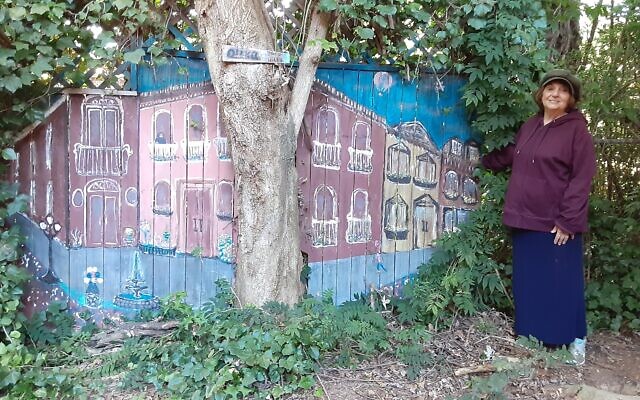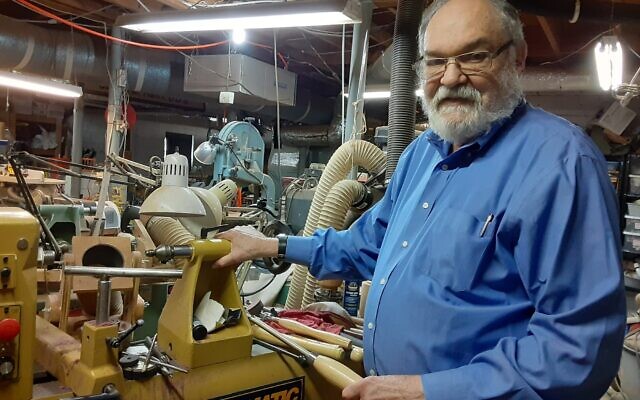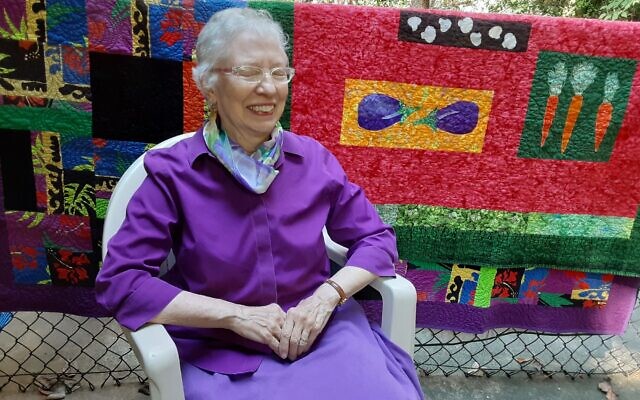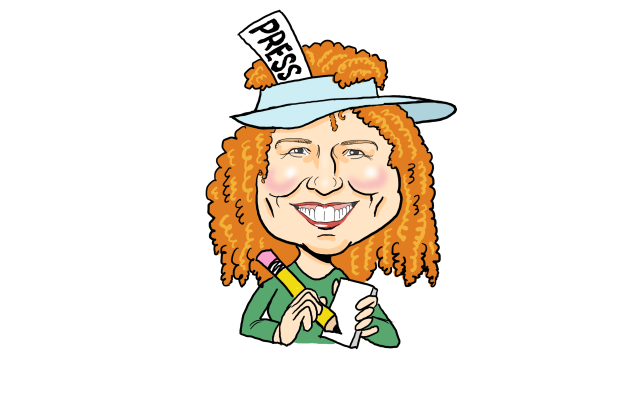Did Early Experiences Affect Your Creativity?
Elena Oliker, Stan Harris, and Leah Steiner share their formative experiences.
Chana Shapiro is an educator, writer, editor and illustrator whose work has appeared in journals, newspapers and magazines. She is a regular contributor to the AJT.
Elena Oliker

Growing up in Leningrad, I was surrounded by amazing architecture and first-class art museums. There is no museum like the Hermitage! Amid our very hard way of life, a walk in the city was aesthetically stimulating and nourishing. In my neighborhood, older adults “adopted me” while my parents were working, and they enabled me to take advantage of the beautiful city.
I was a math major and eventually taught in American universities and had my own business. At the same time, I have always been a writer and enjoy illustrating and exploring other art forms. When I get an idea, I figure out how to create it. Because I’m a mathematician, I can formulate how something can be made or can be taught to others. When you like doing something your “creative spirit” becomes contagious.
When my mother came to the United States, she retired and was able to enjoy painting. She was a good artist, and when she passed away in 2007, I wanted to honor her by extending her affection for young people and her artistic influence. In Atlanta, I started Frimma’s Circle, a no-fee drawing program I developed, in which elementary-aged children met in a workroom at my home for an hour each week. For seven years, I helped groups of children “learn to see.” Kids are often convinced that they can’t draw, and I enabled them to use their abilities in the best way possible.
In Israel, where we live part-time, I continue to volunteer and teach. In an English-speaking club in Netanya, I am the computer person; I train others and bring tech into their lives. I also enjoy working in various art mediums with teenagers in the area.
Most recently, in Atlanta, I was clearing an area of our backyard and ended up exposing a swath of wooden fence. I had a vision and “saw” that I had to paint a European street scene on it!
Stan Harris

Harris, a retired dentist and community volunteer, is a man of many talents. He is an accomplished musician who plays the flute (but never took a lesson), and who has joined with American and Israeli friends in countless area Kumzits groups, which typically last all night. His collection of Israeli songbooks is vast. He spent the summers from 1980 to 1990 on Kibbutz Sa’ad in the western Galilee as a volunteer dentist. And, perhaps most notably, he is a master woodcarver. Here, he speaks for himself:
“I am from Ocilla, a small town in southern Georgia. As a kid, I was a boy scout, earning all the badges and achieving the rank of Eagle Scout. All boys used to have knives, and I was always using mine. I was born with the urge to do and make things myself. If I needed something, I figured out how to create it. That included building things and constructing my own toys.
As a young kid, I remember making a footstool from found wood, a cushion, and tacks. We had relatives in Baltimore, and on one trip my uncle Shlaymie took me to a hobby store and bought me some balsa wood. That light wood, very different from what I was used to, sparked creativity.
I’ve built furniture and a full-wall unit for books and memorabilia. Over more than 40 years, I’ve been acquiring more and better tools, and sometimes I make my own. I try to produce things I need and want, and over the years, I’ve obtained the right tools. The first big tool I bought was a radial arm saw in 1970. I now own many saws, hundreds of different knives, several polishers, sanders, grinders, sharpeners, and a great deal of wood of all kinds and sizes, including exotics.
As a dentist, a patient was unable to pay a large sum of money he owed me. Instead, he gave me my first lathe (I now have 3). When I find a discarded piece of furniture on the street, I often bring it home and turn it into something even better. Whatever presents itself that probably wouldn’t present possibilities to others, is compelling for me. When an opportunity to create from wood presents itself, I eagerly respond!”
Leah Steiner

My natural passions were encouraged, ever since childhood. They have included ballet, loom weaving, drawing, quilting, and watercolor painting. Like so many little girls, I went to ballet class weekly. Unlike so many others, I kept going until I earned a bachelor’s degree in music, with a major in dance.
Professionally, dancing in the ballet company at Radio City Music Hall was an exciting experience. But four shows a day, seven days a week became too much. I went on to teach.
As a young mother, I learned to weave; first on a small frame loom, and then a floor loom. Experiencing the beautiful colors of yarn, the variety of textures and weaving techniques, I was hooked! After much practice, I was employed to weave tallitot in Sharon Norry’s iconic studio in Rochester, New York.
In Atlanta, I was able to study drawing, including colored pencil drawing. I love the calming effect of having a pencil (and eraser) in my hand, and my mind focused only on the image I’m drawing.
A museum exhibit of handmade quilts sparked my next endeavor. A widow, planning to dress only in black, made the quilt using all of her colorful dresses, which gave me pause. I realized that there could be profound meaning in reusing meaningful material to make something new.
And most recently, as a member of the Central DeKalb Senior Center, I attended watercolor classes, where I enjoyed the give and take of my peers and the wise advice of our teacher.
Pandemically, my art is often my therapy, and I see my past experiences as one continuous line of enjoying my blessings.
- Chana Shapiro
- Roving Reporter
- Community
- Leah Steiner
- Elena Oliker
- Stan Harris
- Leningrad
- Architecture
- Art museums
- Hermitage
- math
- mathematician
- Creative
- Unoited States
- Painting
- Frimma’s Circle
- elementary-aged children
- Israel
- English-speaking club
- Netanya
- Teenagers
- art mediums
- Atlanta
- Dentist
- musician
- Flute
- Kumzits groups
- Kibbutz Sa’ad
- Western Galilee
- woodcarver
- Ocilla Georgia
- Boy Scout
- Eagle Scout
- Furniture
- Baltimore Maryland
- Tools
- ballet
- loom weaving
- drawing
- quilting
- watercolor painting
- Music
- dance
- ballet company
- Radio City Music Hall
- Teach
- Sharon Norry
- Rochester New York
- Central DeKalb Senior Center
- art
- Therapy
- community volunteer




comments